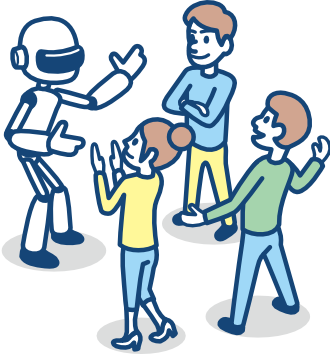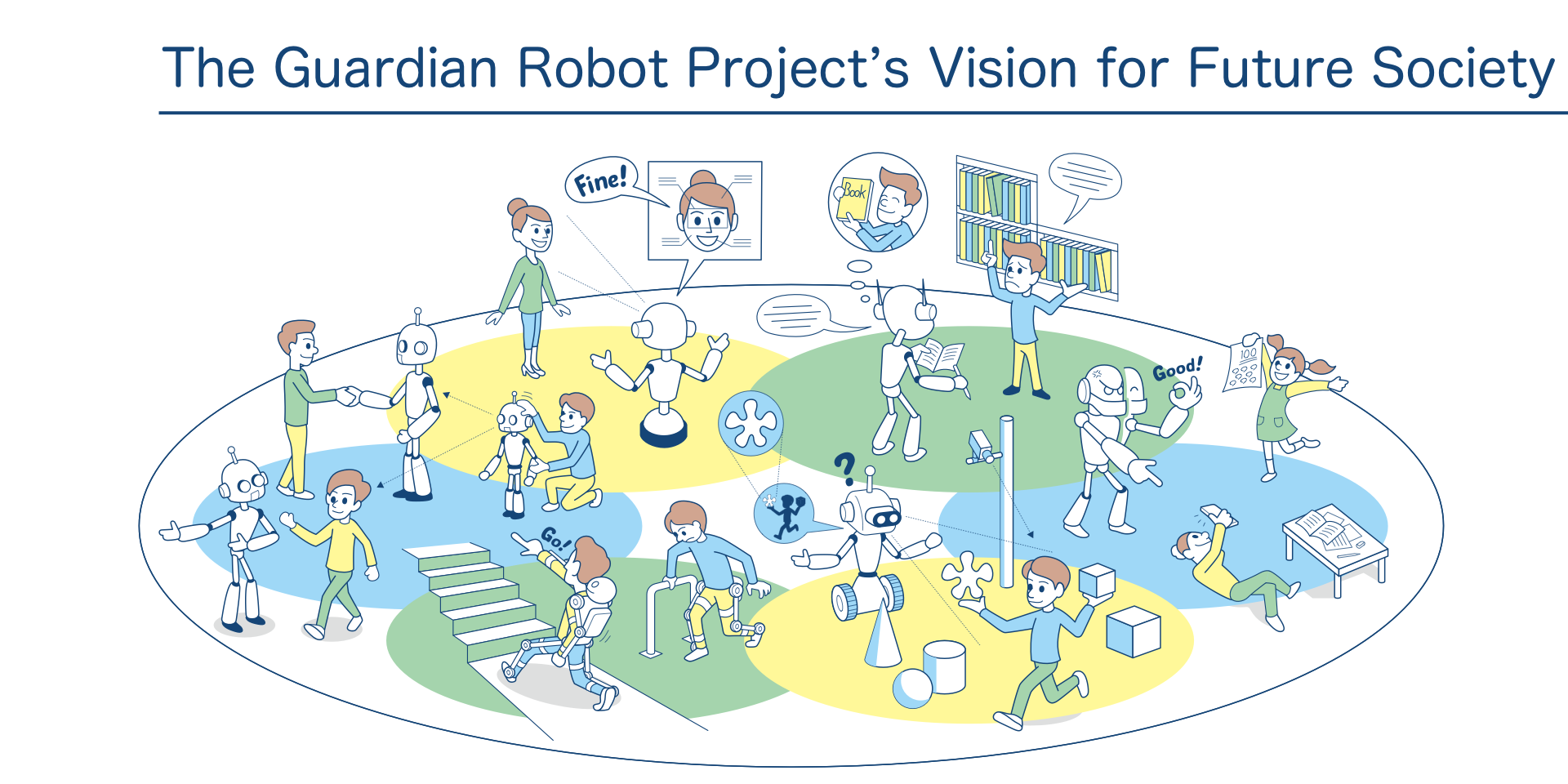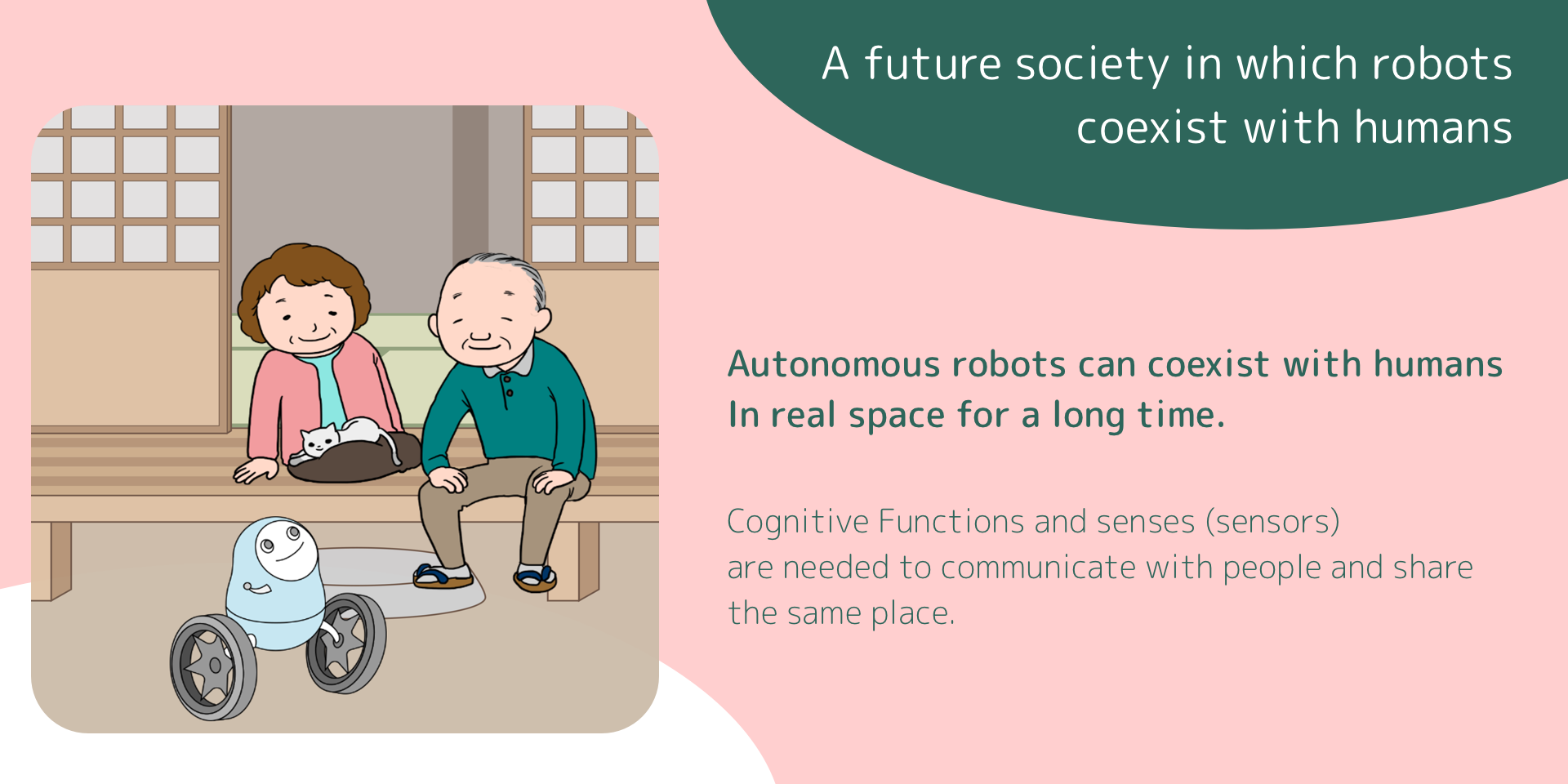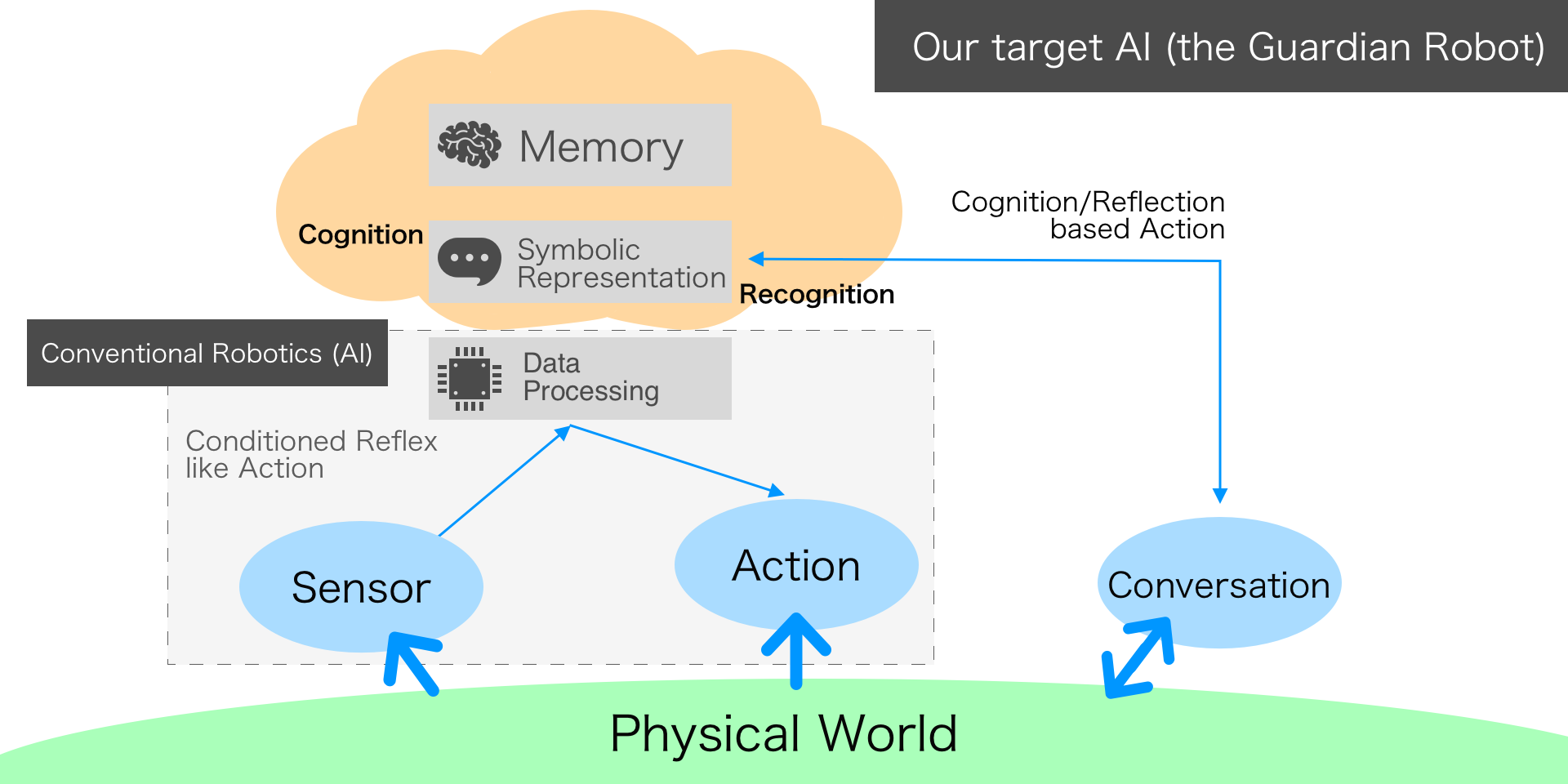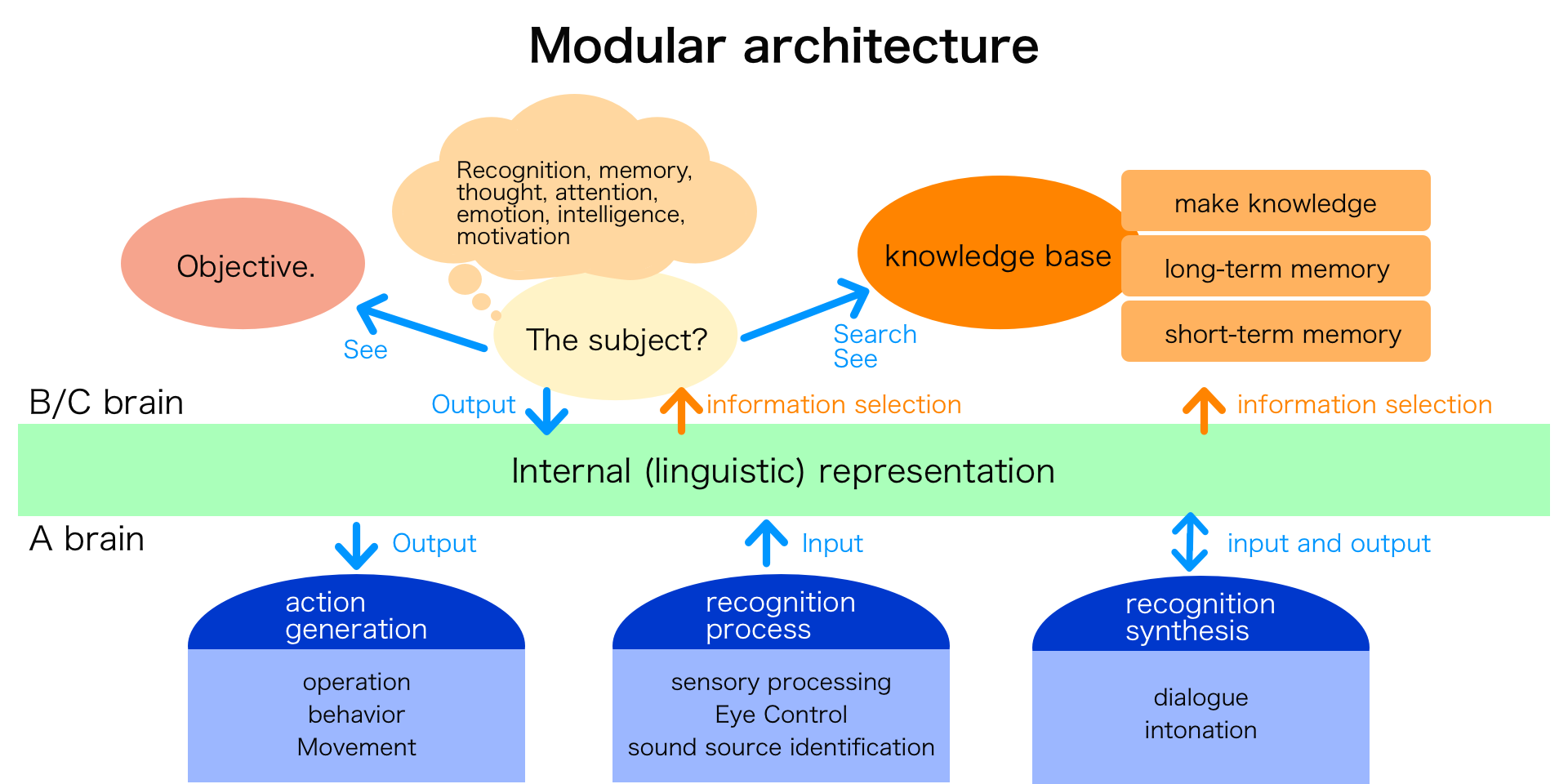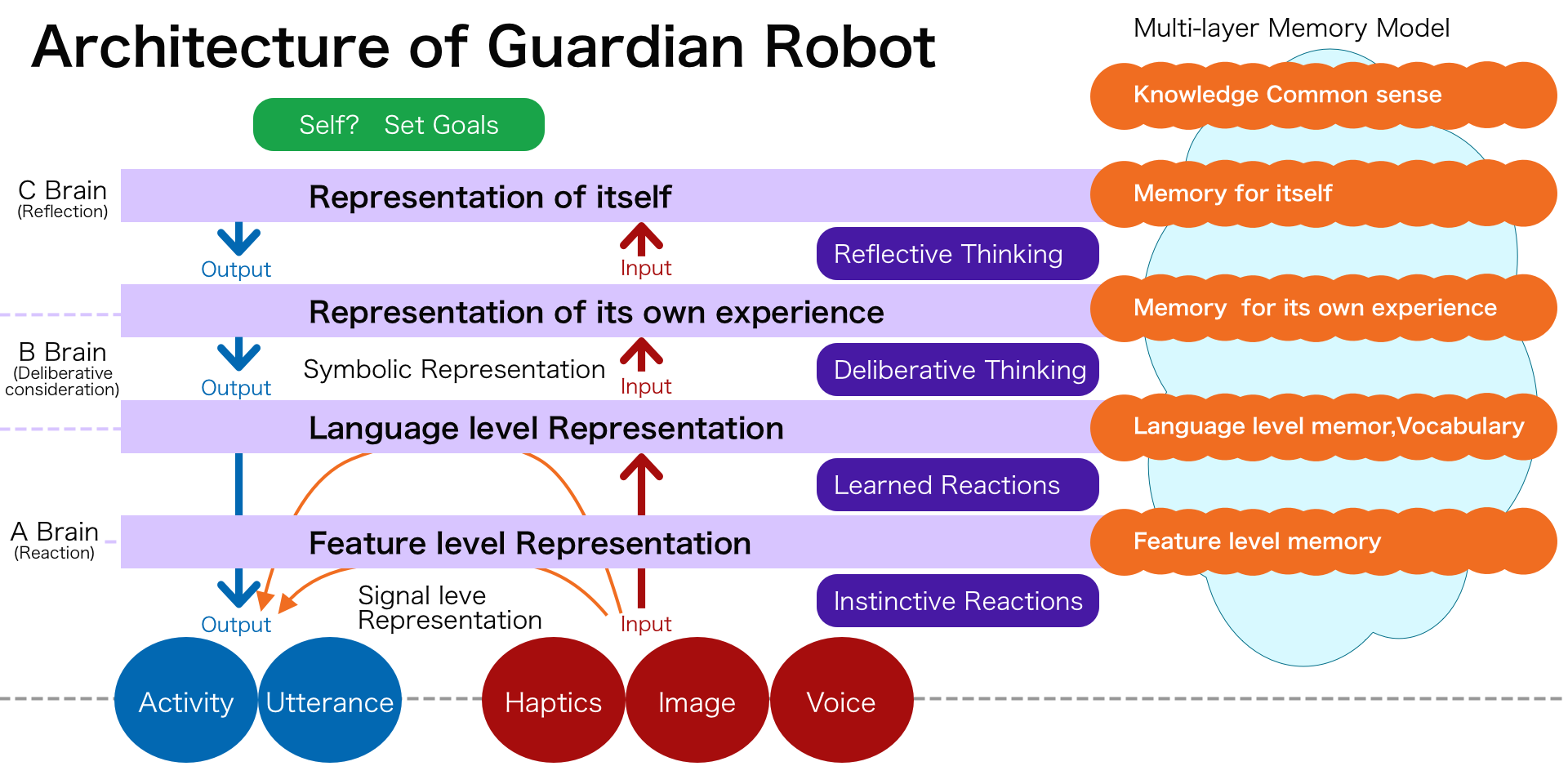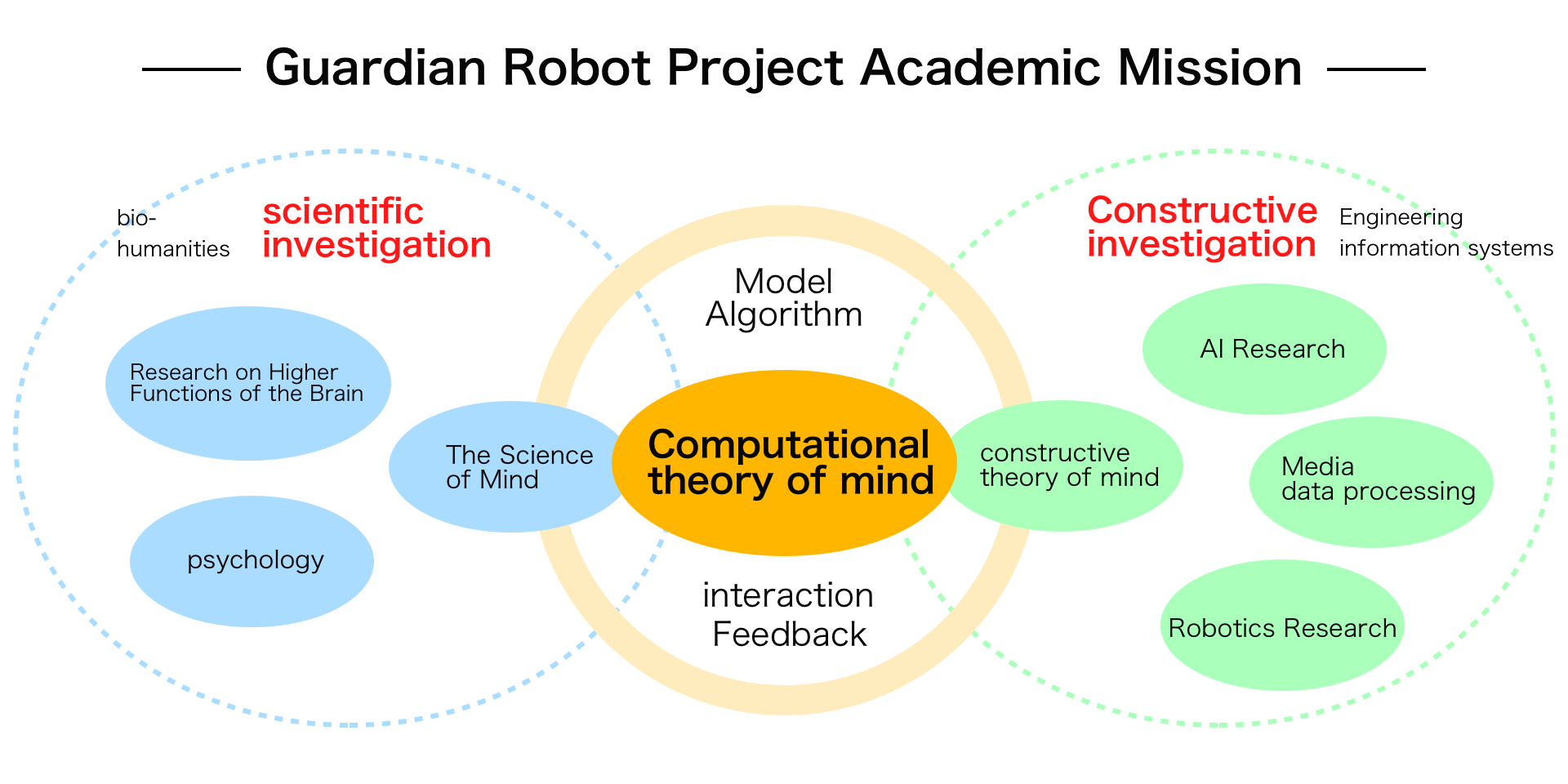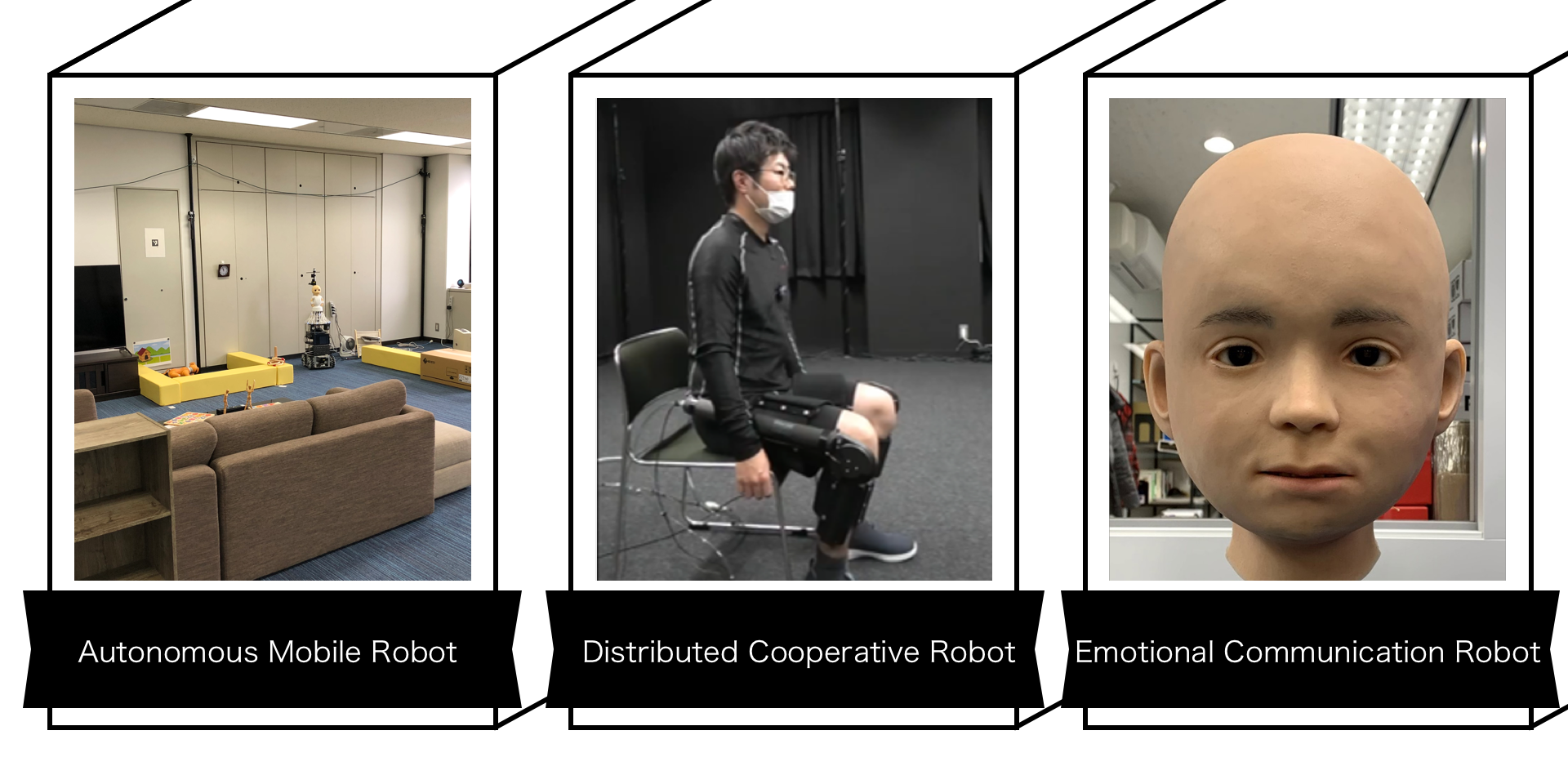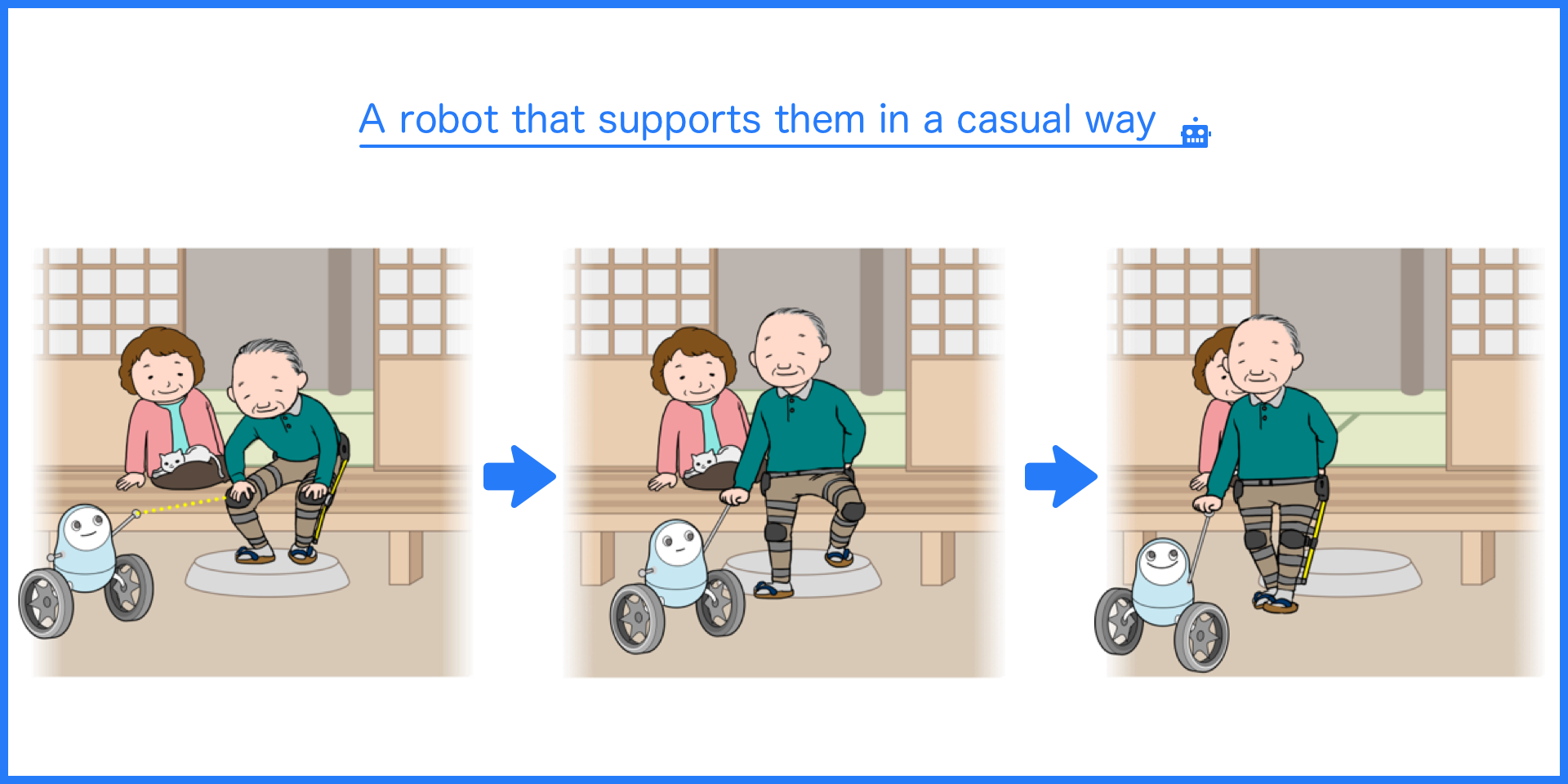Guardian Robot Project
News
- December 22, 2025New! An article by Dr. Sato et al. has been published in Communications Biology
- December 15, 2025New! An article by Iwai et al. has been published in Computers in Human Behavior
- December 15, 2025New! An article by Dr. Shimokawa et al. was selected as an "Editor's Choice Article" in Sensors
- December 15, 2025New! An article by Huo et al. has been published in IEEE Access
- December 8, 2025 An article by Dr. Hsu et al. has been published in Computers in Human Behavior Reports
- November 25, 2025 An article by Dr. Yang et al. has been published in Scientific Reports
- November 25, 2025 An article by Drs. Tang and Sato has been published in Scientific Reports
- November 14, 2025 An article by Dr. Sato and his colleagues has been published in Frontiers in Nutrition
Events
Videos

About GRP
The Guardian Robot Project aims to develop an autonomous robot that can be close to people and make people feel the "heart". Once such a robot is realized, it will be accepted by people and will play an active role in every aspect of our homes and society!
An autonomous function
What has been lacking in the development of robots up to now is an autonomous function that can gather information about its surroundings and act according to its own objectives.We are trying to make a breakthrough in robot development and artificial intelligence research by elucidating and constructing this function.


Robot form
There is more than one physical form of a robot. Depending on the purpose, there can be an exoskeleton wearing type whose main purpose is to support human movement, an autonomous driving type that can move around. There can also be a variety of "forms," such as an interactive type that can accurately carry out conversations with people. If the form is different, the control must be different. Therefore, a certain degree of control is left to each robot, and higher level control is done centrally. The novelty of our research lies in this method.
Six teams are working together

To realize autonomous functions, higher-order functions such as "initiative," "purpose," and "intention," as well as external recognition functions that support these functions are necessary. In the Guardian Robot Project, six teams are working together to elucidate and develop all these functions.
What is a guardian robot?
A robot that accompanies people and supports them in a casual way.
We named it 'Guardian' because it is like a human guardian who adapts to the individual.
